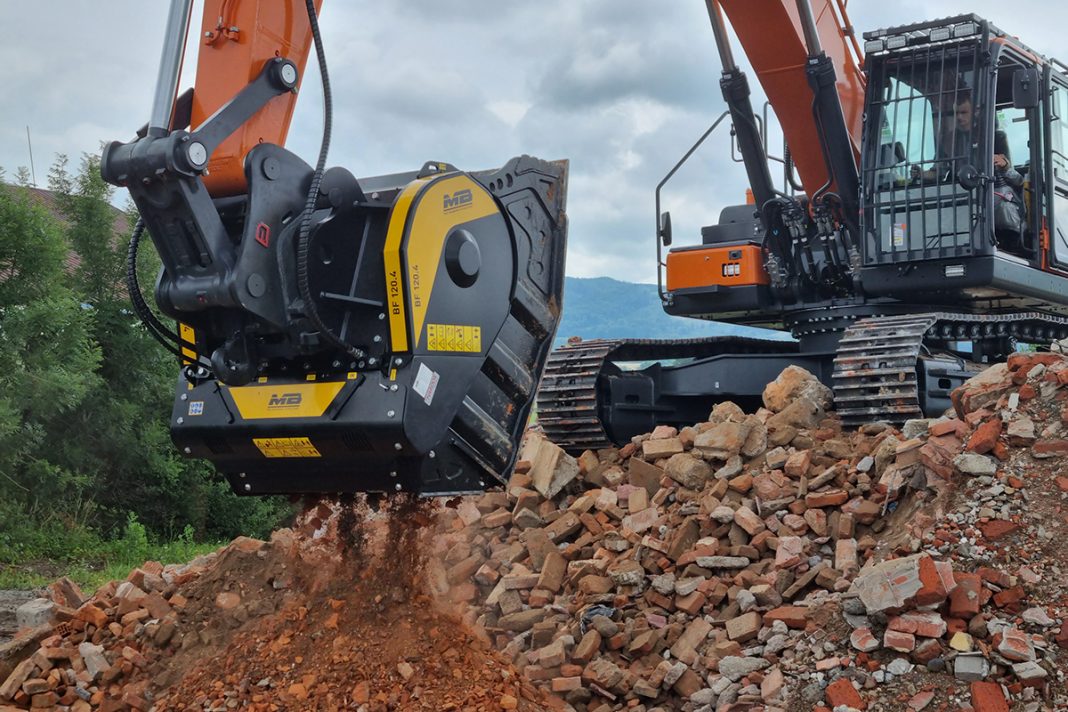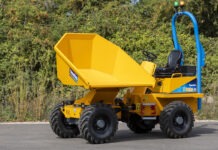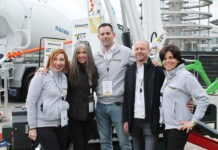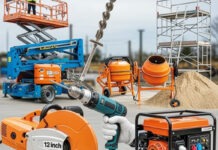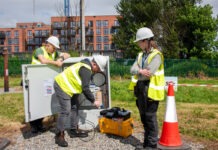For every excavator size, there is a crusher bucket model that can transform a construction site into a recycling centre.
Every construction site – whether small or large – generates waste. Inert materials of all kinds have to find a new life, a new use, considering the difficulty in finding raw materials and the time it takes to get them.
Is it possible to recover waste and put it back into the production cycle in a simple, fast, and cost-effective way?
Many may not know the solution lies in the carrier machine already on-site: combined with an MB Crusherbucket and work the material so that it can be immediately reused or repurposed for other uses.
Whether the excavator is large or small, an MB jaw crusher can be easily installed, allowing you to directly reduce the grain size of the material on site.
When the operating machine is small…
Czech Republic– A construction company from the Czech Republic, needs to recover materials to develop and finish their works on time. On-site, they have an 8-ton Yanmar B7 Sigma midi excavator. Recovering the material directly on site becomes simple when an MB-C50 crusher bucket is installed on the excavator. With a weight of 0.75 tons and a load capacity of 0.15 m3, it is suitable for excavators and backhoe loaders starting from 7 tons and has an hourly production rate up to 10m3. A small jewel capable of transforming a construction site into a recycling centre: it collects material and crushes it to specific sizes within its range, all on-site. Thus, the material can be reused for works in the urban and road sectors.
Mayotte– In this archipelago of the Indian Ocean, the customer wants to become independent from procuring materials from the quarries, both to save on transport costs and wait times and to avoid the continuous coming and going of trucks to and from the construction site. There are two carrier machines in his fleet working with an MB Crusher equipment: a Bobcat T300 with an MB-L140 crusher bucket and a Kubota KX080 with an MB-S14 basket screening bucket.
The combined use of these two pieces of equipment mimics an actual recycling centre: the waste material is screened with the MB-S14, separating the fines from the bulk, then crushed by the jaw crusher, and finally reused directly on-site for filling trenches.
The waste turned into a gain of time and money, but above all, it turned into new material.
If the excavator exceeds 30 tons…
Czech Republic– We are still in the Czech Republic, but this time the customer’s goal is to save on the costs of landfill disposalor having to purchase or rent a large mobile crusher. The excavator on site is a 36 tons Doosan DX 350 LC to which an MB Crusher model BF120.4 jaw crusher is installed: a weight of 48 tons for a load capacity of 1.3m3 and production that can reach up to 53 m3/h.
Larger excavator but same results: the material is recycled on-site, there is no need to repurchase or dispose of it in landfills, transport costs and processing times are also reduced. And you work in total safety since the excavator operator himself does the operations.
Bulgaria– The redevelopment of the area where the largest steel complex in the country was active for 40 years – the Kremikovtsi plant, whose dimensions were comparable to a city – saw one of the largest models of crusher buckets at work, the BF135.8. On a 45-plus-ton Hyundai excavator. Vast quantities of reinforced C&D demolitionmaterial had to be processedin an area of approximately 12 million square meters. For this reason, the MB Crusher bucket was chosen. A flexible piece of equipment, easy to transport and use, capable of a high hourly production, and capable of crushing the reinforced material without any problem. The reinforced concrete is crushed to the desired output size, and the iron separates quickly from the aggregate pile. At the same time, a lot of truck trips – and pollution – are reduced.
In short, whether the construction site is large or small, there is always an MB Crusher unit with which it is possible to create a recycling centrethat allows the company to be independent in material procurement.
And the cost of producing the recycled aggregate is much lower than that of purchasing virgin aggregate; it is also good for the environment and complies with the latest regulations issued in various countries on the use of recycled aggregates.

